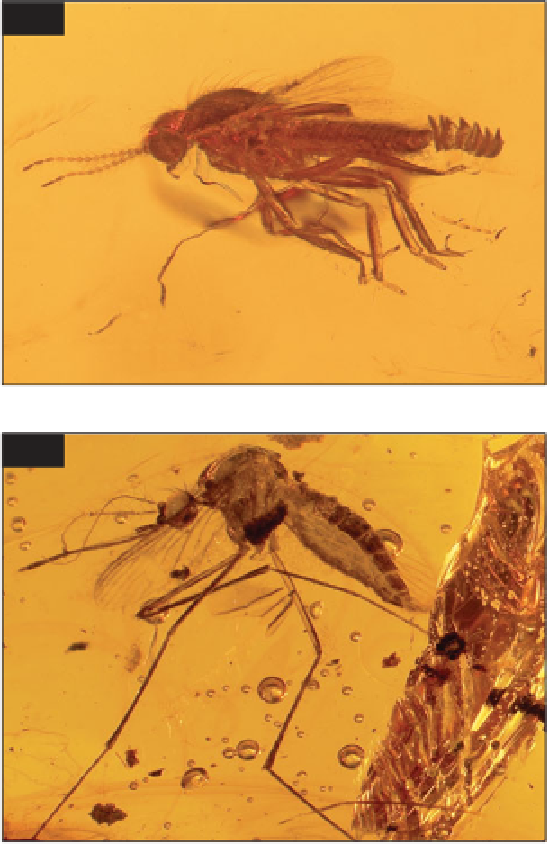Geoscience Reference
In-Depth Information
matter; Bibionidae (March flies), the
adults of which appear in large numbers in
the spring; Ceratopogonidae (biting
midges,
270
), whose adults inflict painful
bites on animals and whose larvae are
detritivores in aquatic habitats; Culicidae
(mosquitoes,
271
), infamous blood-suckers
with aquatic larvae; and Drosophilidae, the
fruit flies (
272
). Mycetophilidae (fungus
gnats) are tiny flies ubiquitous in
woodlands whose larvae feeding on fungi
and decaying wood are extremely diverse
in the amber; Tipulidae (crane flies), the
familiar 'daddy-long-legs' flies, have about
15 genera in Dominican amber; the large,
predatory Asilidae (robber flies) and
charming Bombylidae (bee flies), which
suck nectar and resemble bees, also occur.
For a full list of fly families and genera
reported from Dominican amber, see
Poinar and Poinar (1996).
Caddis flies (Trichoptera) have aquatic
larvae but the adults fly. One family is
known to have larvae which live in
phytotelmata today, but its fossils have not
yet been found in Dominican amber.
Quite a variety of caddis flies do occur,
however, which provides additional
270
270 A biting midge
Ceratopogonidae with a row
of eggs just emerged from its
ovipositor PC. Length 2 mm
0.08 in.
271
271 A mosquito Culicidae
PC. Length about 6 mm
0.2 in.




Search WWH ::

Custom Search